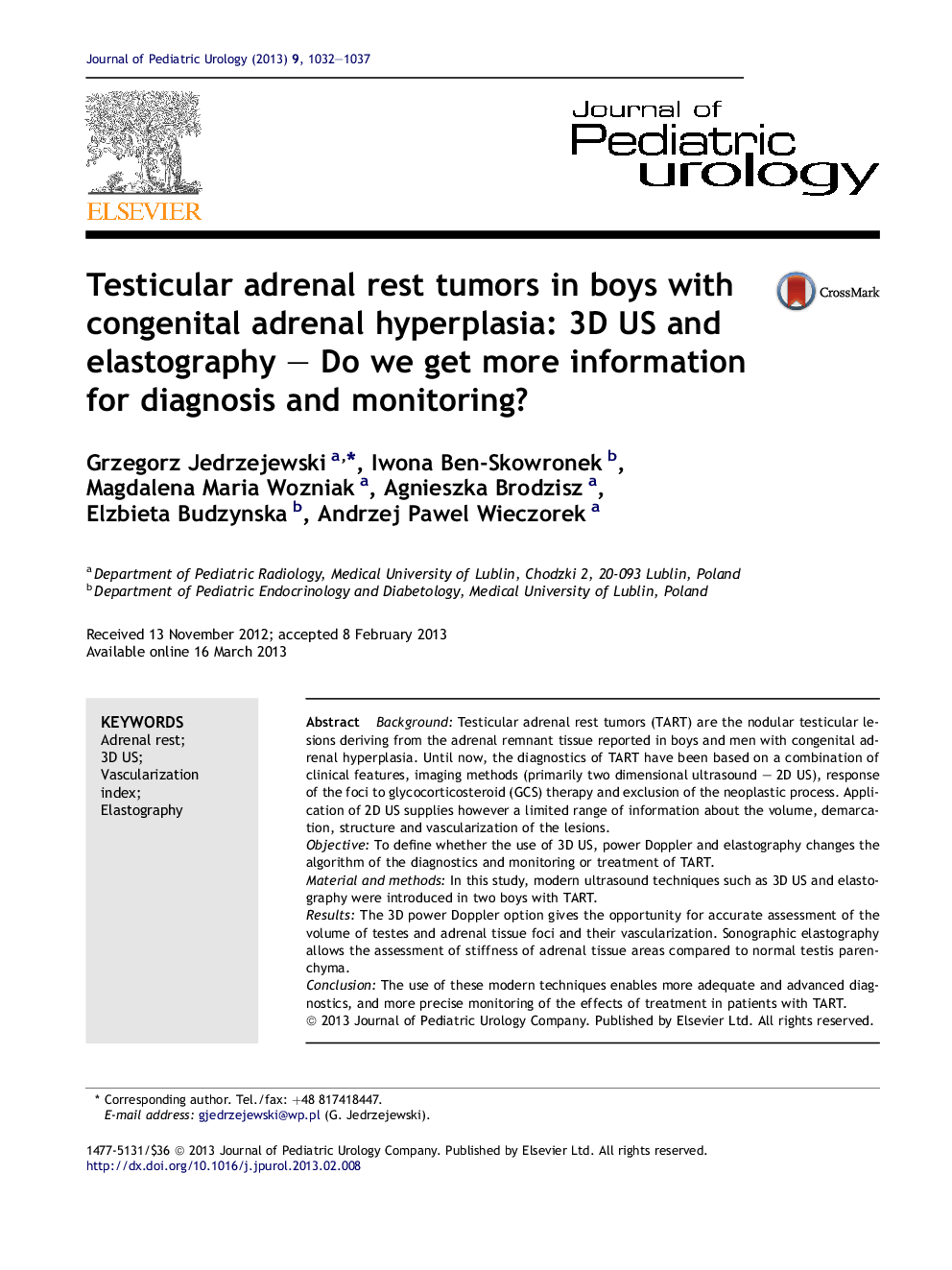| Article ID | Journal | Published Year | Pages | File Type |
|---|---|---|---|---|
| 4162398 | Journal of Pediatric Urology | 2013 | 6 Pages |
BackgroundTesticular adrenal rest tumors (TART) are the nodular testicular lesions deriving from the adrenal remnant tissue reported in boys and men with congenital adrenal hyperplasia. Until now, the diagnostics of TART have been based on a combination of clinical features, imaging methods (primarily two dimensional ultrasound – 2D US), response of the foci to glycocorticosteroid (GCS) therapy and exclusion of the neoplastic process. Application of 2D US supplies however a limited range of information about the volume, demarcation, structure and vascularization of the lesions.ObjectiveTo define whether the use of 3D US, power Doppler and elastography changes the algorithm of the diagnostics and monitoring or treatment of TART.Material and methodsIn this study, modern ultrasound techniques such as 3D US and elastography were introduced in two boys with TART.ResultsThe 3D power Doppler option gives the opportunity for accurate assessment of the volume of testes and adrenal tissue foci and their vascularization. Sonographic elastography allows the assessment of stiffness of adrenal tissue areas compared to normal testis parenchyma.ConclusionThe use of these modern techniques enables more adequate and advanced diagnostics, and more precise monitoring of the effects of treatment in patients with TART.
